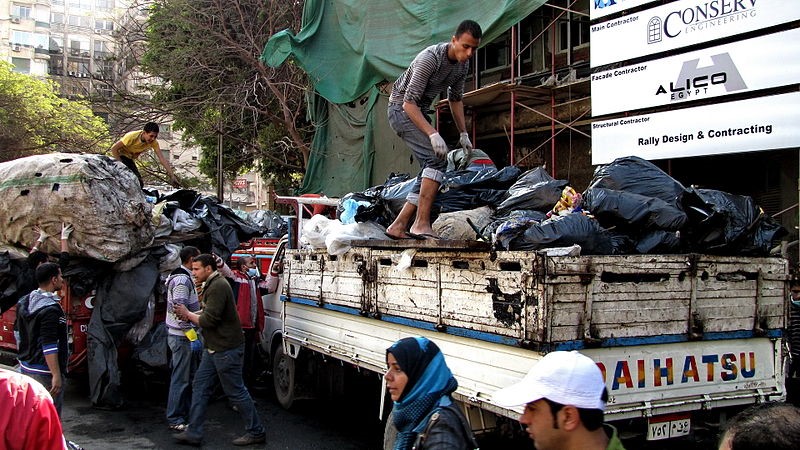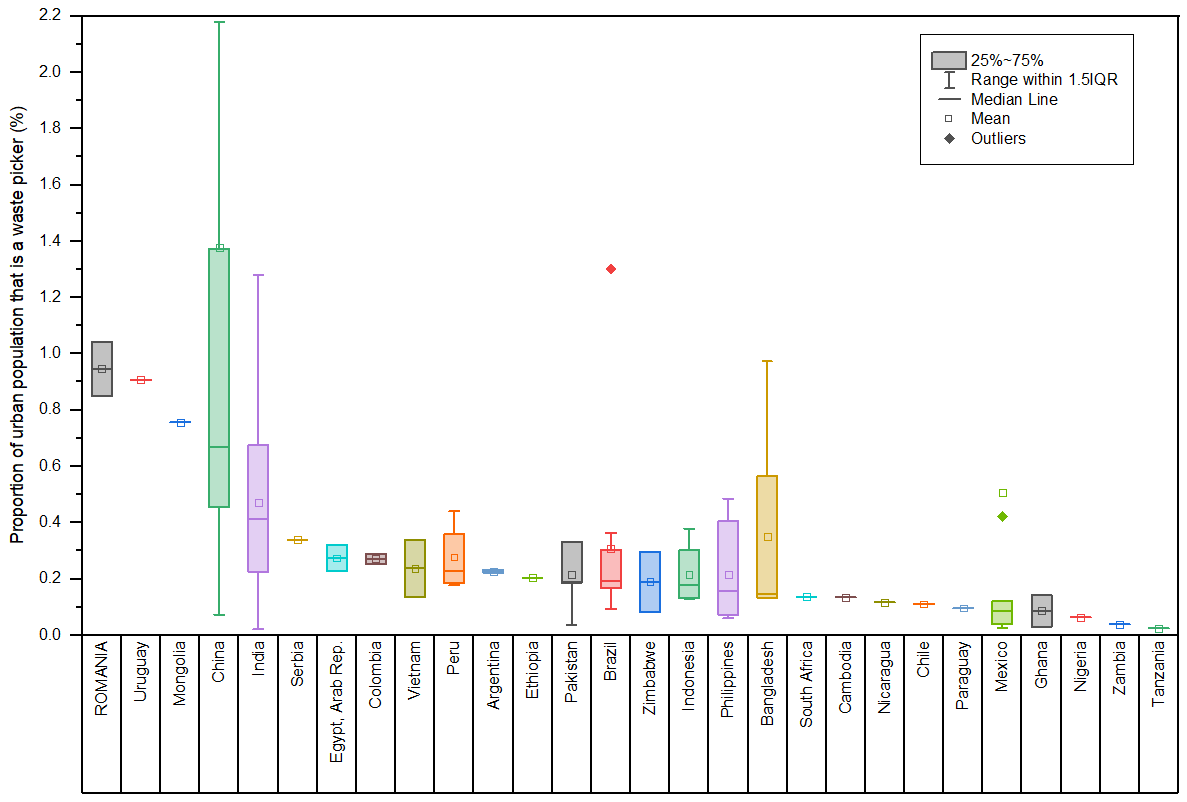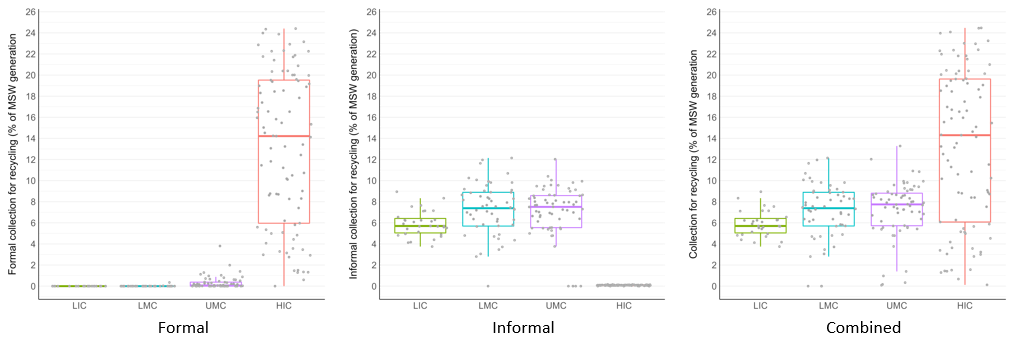The Science Behind....
Recent models developed by the University of Leeds (UoL) such as the Plastic Pollution Calculator (PPC), the SPOT model, and the P2O model have begun to address this oversight by mapping the complexities of the solid waste management system including the activities of the informal waste sector. However, these models are limited in their capability to fully assess the contribution of the informal sector to plastic pollution prevention. We aim to build upon these existing models to develop a standardised methodology for the quantification of IRS activities around the world, with particular focus on the key regions of Africa and ASEAN member states.

Waste Collection in Tahir
Systematic literature review of IRS activities
We are undertaking a systematic scoping review of the activities of the informal waste sector using the PRISMA-ScR methodology, which the UoL has extensive experience as demonstrated through the publication or submission of several recent scientific contributions. The purpose of the review is to assess the state of knowledge on informal sector productivity and prevalence. For example:
- What is the productivity of informal sector participants and how does this vary according to collection modality?
- What materials are collected by the informal recycling sector and what level of quality is required to secure maximum value?
- How are rejects from sorting activities managed?
Our review will assess the methodological choices made by authors and the reliability of their estimates, forming the bedrock of a new methodology for quantification of the informal recycling sector activities.

Preliminary findings of systematic review which shows the number of waste pickers operating in different countries as a proportion of the population
Baseline quantification of contribution to plastic pollution prevention
We are developing a scientific and standardised methodology to collect robust and defensible data on the informal recycling sector. The methodology is undergoing pilot testing in Kathmandu, Nepal, where it is anticipated that we will carry out a census of between 5,000 and 10,000 waste pickers with the help of our on-the-ground project partners Doko Recyclers and CREASION, who will oversee the data collection phase. We hope to develop a method which will be practically implementable in multiple Global South contexts with the most efficient use of resources feasible.
Data analytics of IRS data
Data analytics will attempt to identify predictors of factors relating to the prevalence and productivity of the informal recycling sector using data obtained through the systematic scoping review. This has the overall aim of producing suitable inputs for the model development and will involve several steps such as data interpretation, data cleaning, data analysis and identification of trends, and assessment of uncertainty.
UoL has demonstrable expertise in data analytics of solid waste management data such as in the state of the art random forest machine learning techniques implemented in the UoL SPOT model. This expertise along with our vast experience in research of the informal sector and solid waste management in developing countries will be used to understand the method behind which the data were collected where possible and clean the data of erroneous results. Data analysis techniques will then relate the data acquired to the local context to assess trends and relationships. For example, the number of waste pickers will be assessed based on the income level of the country alongside other socio-economic factors. This stage will benefit from machine learning if required to assess non-linear trends in the data.

Preliminary modelling following systematic review of informal recycling sector. Charts show the distribution of estimates for material collected by formal and informal recycling sectors by income group.
Modelling
The cleaned data and relationships will be used to produce a global model that quantifies the contribution of the informal recycling sector to plastic pollution prevention. This model will build upon similar work already undertaken by UoL as demonstrated in the SPOT model. However, the model developed in this work will improve existing quantification efforts by accounting for a wider breadth of data, detail more information such as the different roles of the informal recycling sector and the contributions each make, and specifically quantify both the positive and negative contribution to plastic pollution by the informal recycling sector. For example, although the informal sector may prevent plastic pollution by collecting waste from mismanaged dumpsites or the environment, they may also contribute to plastic pollution by the dumping or open burning of rejects. The UoL team features core expertise in the field of plastic pollution, having produced several leading methodologies on its quantification that have been applied by major organisation across the World.
GIS analysis will be used in the development of the model for both the determination of local factors that may be used as inputs to the model, and as a means to visualise results in an easy to communicate manner. The GIS analysis further allows the results and subsequent interventions to be at multiple scales, enabling a local to global analysis. The model itself will be formulated using a combination of Microsoft Excel and R. The latter will primarily be used when more detailed calculations such as Monte Carlo analysis of uncertainty are required.
Although results will be calculated globally, particular emphasis will be placed on the key regions of Africa and ASEAN member states given these are widely regarded as hotspots for plastic pollution and have highly active informal recycling. This will involve more detailed analysis of the results in these regions. The global analysis would also help to put these two regions also into perspective.
